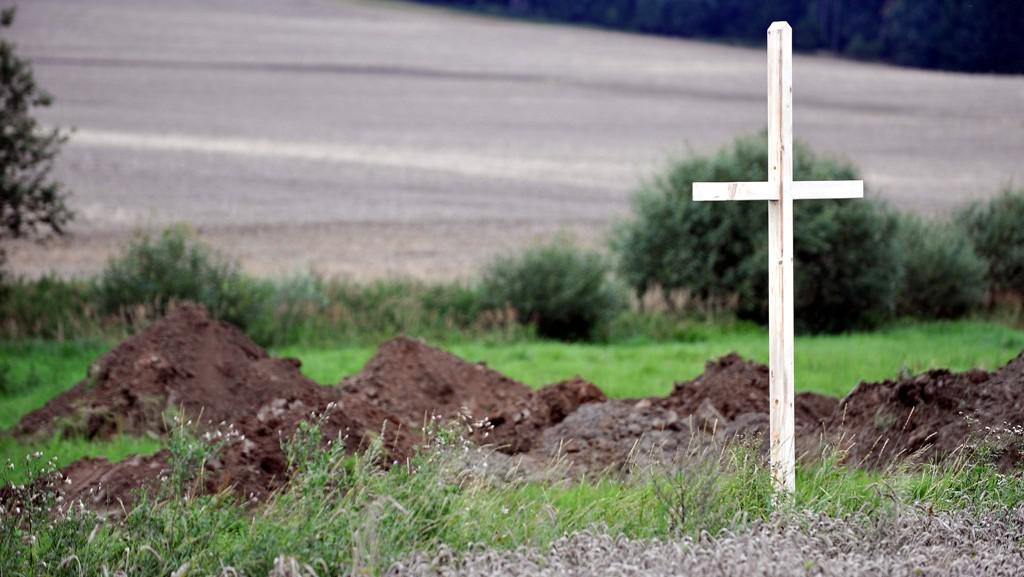29.10.2010 Discovery of a mass grave near Dobronín
Categories: Second World War , War crimes , Calendar

At least thirteen people were buried in a mass grave in Dobronín in the Jihlava region. This news was reported by the media eleven years ago. According to testimonies, the German inhabitants destined for deportation were supposed to be buried in the grave.
Just a few hours after the discovery, local residents erected a wooden cross at the site as a symbol of suffering. The Germans were allegedly killed in May 1945 by the local Czech inhabitants. The violent events of that time are described in notarised testimonies of the displaced German inhabitants. It occurred shortly after the liberation of Dobronín in the village of Německý Šicendorf, now a district of Dobronín.
"My personal opinion, as the person who erected the cross next to the mass grave, is that the place to commemorate these people would belong to the place where they were murdered. And that place will show the horror of what happened there," said Milan Litavský, a resident of Dobronín at the time.
The first reports of the discovery of the mass grave appeared in July 2009. The unfortunate events are described, for example, by the German writer Herma Kennel in her book Bergersdorf, which deals with the coexistence of Germans and Czechs. She tells how about a dozen Germans were detained in a building guarded by glassworks workers.
Together with other Germans detained at the Merunka farm, they were herded towards a field in the direction of Nové Dvory. "There they had to dig their graves in the heavy rain. The drunken, cheering men then beat their victims with pickaxes and chopped them up with spades. Whoever was still alive after these tortures was shot," Kennel describes.
Archaeologists dug up the first victims in August 2010. But rain complicated their work, and they had to cover the grave again at the behest of a police investigator. The water would have irreversibly damaged the find, which neither the archaeologists nor the police could allow.
The remains were less than a metre below the surface. In addition to the bones, the archaeologists also found remnants of leather clothing. And then a shoe or a comb. The police were investigating the case as a homicide. The police interviewed dozens of people as part of the investigation.
"This work must be treated with the utmost reverence. The second thing is to be reticent about different conclusions, because this is a police investigation," archaeologist Petr Hrubý explained at the time
A DNA test subsequently proved that the bodies did indeed belong to Germans. "Eleven DNA samples were sent from Germany to the Czech Republic, three of which were not usable because the sampling was not done properly in Germany. So three tests had to be repeated," Johann Niebler, the representative of the survivors, described the testing process at the time.
Sources: www.irozhlas.cz, www.denik.cz, www.idnes.cz, www.e15.cz, www.cesktelevize.cz
The article is included in categories: